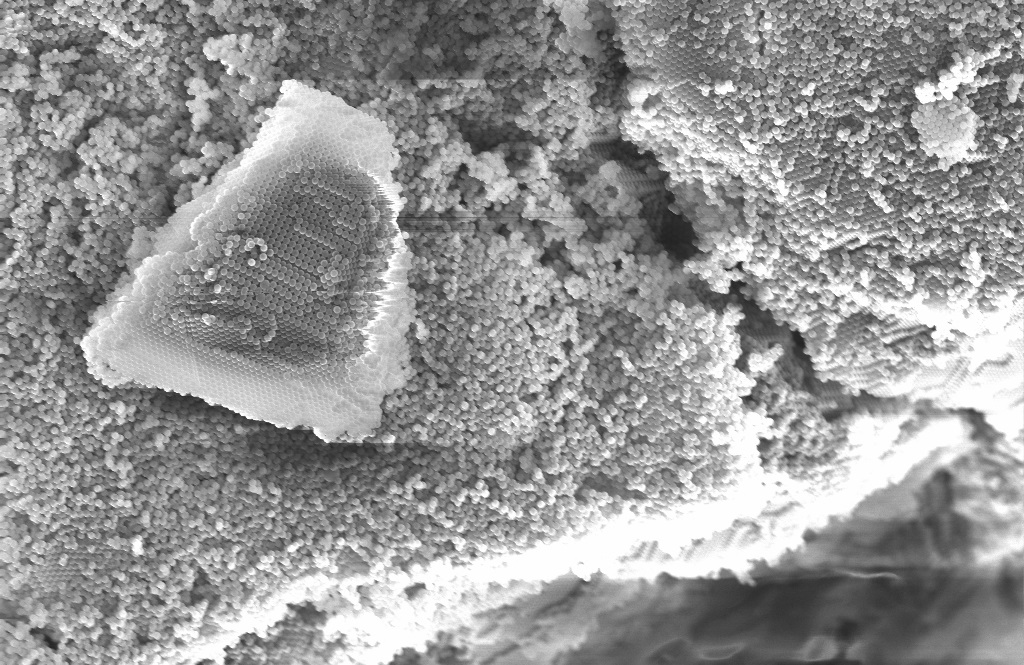In this article I wanted to share some SEM (Scanning Electron Microscopy) images of polymer (polystyrene) nanoparticles that I took several years ago. When you think about things on the nanometer scale (0.000000001 meters) it’s sometimes hard to visualize just how tiny things are at this scale. The polymer nanoparticles in these images for example are so small that not only can they not be seen with the naked eye; you would also not be able to see them even with a standard optical microscope. Its only with an electron microscope (which uses electrons instead of light to image extremely small objects) that we can begin to visualize these extremely small materials like the particles featured in the image above which was taken at 3,200 times magnification.
How Small is a Nanoparticle?
I find that sometimes it helps to compare nanomaterials to other small objects that we are more familiar with in our everyday lives to give a better feel for just how small these materials are. In the article on Salt and Pepper I shared some SEM images of everyday table salt and pepper. The cube shaped grains of table salt in these images have sides that are on average 250 micrometers across. This means that each grain of salt is approximately 1000 orders of magnitude larger than each polymer nanoparticle. This is similar to the size difference between an average human (1.6 meters tall) and the World’s tallest building (Burj Khalifa 830 meters tall). Another way to visualize just how small these particles is to consider how small a single grain of salt is and then realize that if it was hollow you could fit approximately 1.5 billion of these individual polymer nanoparticles inside that single grain of salt.
Nano Patterns
Finally, another really interesting aspect of these particular nanoparticles is how uniform they are in size and shape. In the image below (taken at 6300 times magnification) you can see an incredibly uniform hexagonal repeating pattern formed by the close packing of the particles in the dry state. This uniform repeating pattern is only possible due to the extremely uniform size and shape of these particles. In fact, out of the thousands of particles on the top layer of the image below your eye can quickly pick out the 3 or 4 slightly larger spheres simply due to the way they create a defect in the overall pattern. Making materials that are this uniform in size and shape is tricky even in the normal size world, but at the nano-scale controlling size and shape is exponentially more difficult and therefore even more aesthetically pleasing when you see the end result of a nearly perfect sample of nanoparticles.




One Reply to “Polymer Nanoparticles”